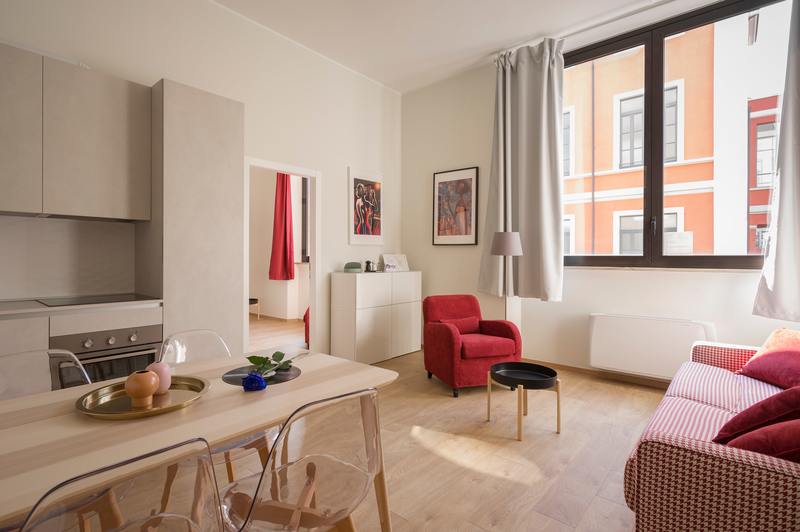When inspecting your apartment, you’ll probably wonder “how to check for mold in apartment”. You’re going to have to rely on your senses of sight and smell to spot any mold growing anywhere. Here’s a quick breakdown of what you ought to know about detecting any mold, what you should know about the effects of mold, and what you can do about it.

How To Check For Signs Of Mold
Tip #1. Sniff out any odors
Mold usually gives off strong, musty odors, which are hard to ignore. If you notice any weird smells around the apartment, that could be a tell-tale sign that mold is growing somewhere.
The odor could help you find the source of where the mold is growing. The smell may be most pungent in the hidden nooks and crannies like behind cabinets, corners of walls, cupboards where your pipes are, attics, basements, or even crawl spaces.
You’ll most likely find the source of mold odors in places where there’s a lot of moisture. Your bathroom or kitchen could be prime breeding grounds for mold.
Don’t leave out your bedroom or living room, though. Mold releases spores that could land on another part of the house, and any dampness could cause them to grow. You may also want to check the vents for the source of the odor.
Tip #2. Look for discolored spots
Mold will leave a mark somewhere. Mold comes in different colors, so check for black, green, blue, brown, or even white spots. We’ve got a handy guide for what color mold grows, in case you were wondering.
As stated earlier, check for damp places. The mold will thrive in areas with moisture, so anywhere that could be prone to water damage, like your bathroom and kitchen or anywhere with high humidity.
Tip #3. Look out for watermarks or stains
We’ve established many times how moisture causes mold to grow. Suppose there’s any unchecked water damage or intrusions that have left any marks around the apartment. In that case, you’ll indeed find mold growing nearby.
You may also want to check for any peeling or bubbling paint or bulging drywall. These are signs that water has seeped through the walls and another tell-tale sign of mold.
Tip #4. Monitor your health
Mold releases spores that could travel through the air, which could make you sick. These spores are more likely to affect asthmatic people, but that doesn’t precisely mean everyone is safe from mold.
You may start sneezing or coughing, or perhaps you could have trouble breathing when you’re at home. These symptoms can mean an allergic reaction to inhaling mold spores.
The problem doesn’t stop at your respiratory system, though. Your eyes could itch as a result of the aforementioned low air quality.
Even your skin could be affected as you may develop rashes. In some cases, you could also get psoriasis as a result.
You could even feel tired or dizzy from the air as a result of the air quality. If you notice these symptoms go away when you leave your apartment, it could mean that mold is growing somewhere in your home.
What To Do If Your Apartment Has Mold
If water damage is causing molds, we’ve got you covered on how to deal with it. Here’s a guide on how to remove mold caused by water damage.
Even if you deal with easily detectable mold, you may want to contact your landlord. By doing so, you can assess how much costs you’ll cover.
In some cases, you and your landlord will talk about calling in a professional to deal with those hard-to-reach places. There may be molds growing somewhere you haven’t noticed yet, so a professional can help rid all molds currently thriving in the apartment. You can discuss the extra cost with your landlord.
By the way, if you’re dealing with black mold, leave it to the professionals. That stuff is highly toxic and could cause harm to you if you deal with it yourself.
In preventing mold in the future, you may want to check for leaky pipes. If you and your landlord have hired a handyman, ask them to check your kitchen and bathroom pipes. Preventing leaks can reduce the possibility of molds growing in these places.
When dealing with water spilling, dry out any moisture immediately. Leaving water spills could leave water stains which, as previously mentioned, can be a breeding ground for mold. Whether it’s water around your sinks, bathtubs, or showers, you’ll want to keep any surrounding area dry.
If possible, invest in a dehumidifier. Mold develops in areas of high humidity. Using a dehumidifier can lessen the chances of mold spores landing anywhere in the apartment and growing.
Conclusion
Molds are a severe health hazard, and you should deal with them immediately as soon as you notice them. Keep your apartment healthy and clean by inspecting all those nooks and crannies.
Also worth mentioning is that prevention is better than cure. Preventing water damage, cleaning up spills, and keeping humidity low are great ways to reduce mold from forming in any part of your apartment. Knowing how to check for mold in apartment is half the battle, so good luck in making your apartment comfy.
